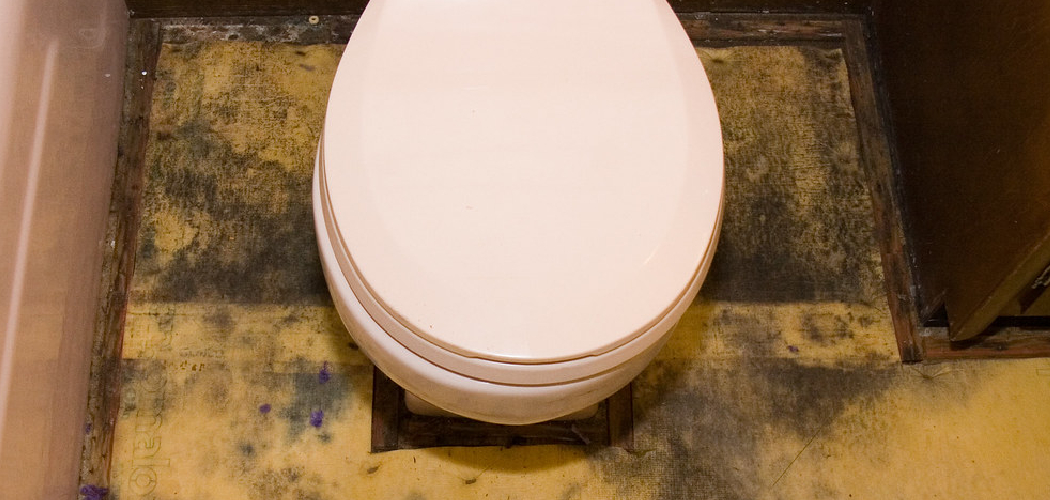Mold in toilets is a common problem faced by many homeowners. Not only does it create an unsightly appearance, but it can also cause health issues if left untreated. Mold thrives in damp and dark environments, making the toilet bowl and tank an ideal breeding ground. However, with proper maintenance and cleaning, you can effectively prevent mold growth and maintain a clean and hygienic toilet.
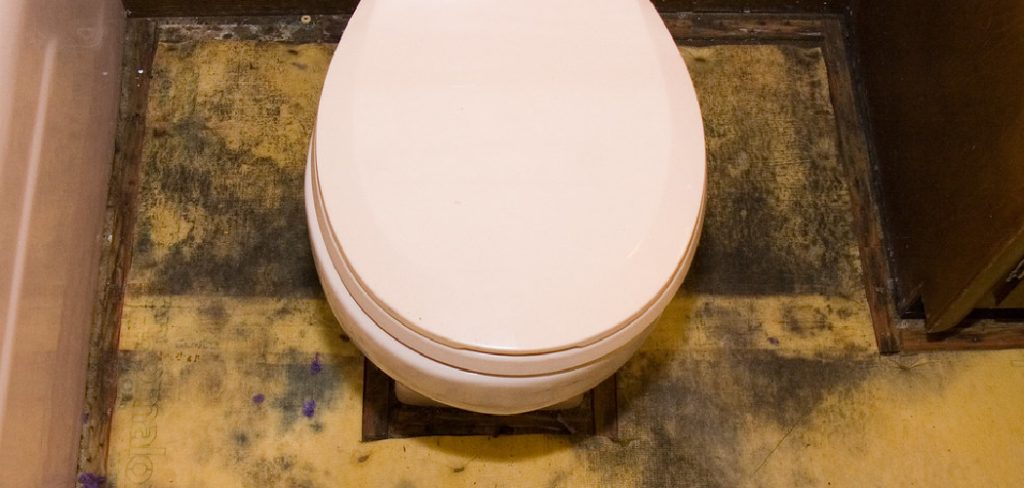
In this guide, we will provide useful tips and techniques on how to stop mold in toilet and keep it at bay. So say goodbye to a moldy and uninviting toilet, and hello to a sparkling clean one!
Understanding Mold in Toilets
Before we dive into the solutions, it’s important to understand what mold is and why it grows in toilets. Mold is a type of fungus that thrives in warm, damp, and dark conditions. Your toilet provides the perfect environment for mold growth due to its consistent moisture levels and lack of sunlight. This makes it an ideal place for mold spores to settle and multiply.
Also, mold feeds on organic matter, such as dirt and grime, in the toilet bowl, making it a constant food source. As mold grows, it can release spores into the air, which can trigger allergies and respiratory problems for individuals who are sensitive to mold.
11 Best Ways on How to Stop Mold in Toilet
1. Regular Cleaning:
The best way to prevent mold growth in your toilet is to keep it clean. This means scrubbing the bowl, tank, and seat regularly with a disinfectant cleaner. Make sure to pay extra attention to hard-to-reach areas, such as under the rim of the bowl and around the hinges of the seat. This will remove any organic matter that mold feeds on and reduce its chances of growing. If you notice any mold spots, make sure to clean them immediately with a bleach solution.
2. Keep the Toilet Dry:
As mentioned earlier, mold thrives in damp environments. Therefore, it’s essential to keep your toilet as dry as possible. After using the toilet, make sure to flush and wipe down any excess water on the seat, lid, and tank with a dry cloth. You can also leave the lid open to allow air circulation and prevent moisture buildup. Make sure to fix any leaks or dripping faucets in the bathroom, as they can contribute to excess moisture.
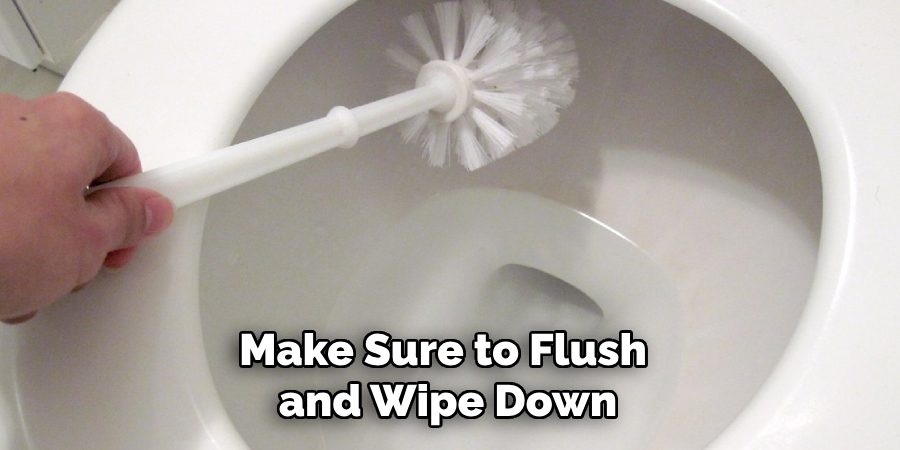
3. Use a Dehumidifier:
If your bathroom has poor ventilation, consider using a dehumidifier to reduce humidity levels. High humidity encourages mold growth, so keeping it under control is crucial. You can place the dehumidifier near the toilet or in the bathroom to reduce moisture levels and prevent mold from thriving. Using a dehumidifier is especially useful in areas with high humidity levels or during rainy seasons.
4. Proper Air Circulation:
Good air circulation is essential in preventing mold growth in your toilet. Without proper ventilation, moisture can get trapped inside the bathroom, creating an ideal environment for mold to thrive. Make sure to open windows and doors after showering or using the toilet to let fresh air in. You can also install an exhaust fan to help circulate the air and remove excess moisture from the bathroom.
5. Use Mold-Resistant Paint:
If you’re planning on repainting your bathroom, consider using mold-resistant paint. This type of paint contains antifungal properties that discourage mold growth on its surface. It’s especially useful for areas prone to moisture, such as the walls and ceiling around the toilet. Mold-resistant paint can be a bit more expensive, but the long-term benefits of preventing mold growth make it worth it. Using this type of paint can also save you time and money when cleaning mold in the future.
6. Regularly Replace Toilet Brushes:
Toilet brushes are a breeding ground for bacteria and can harbor mold spores if not cleaned or replaced regularly. You should replace your toilet brush every six months to prevent it from becoming a source of mold growth. If you notice any visible mold on your toilet brush, make sure to discard it immediately and replace it with a new one.
7. Use Vinegar:
Vinegar is a natural disinfectant that effectively kills and prevents mold growth. You can use a mixture of equal parts water and vinegar to clean the toilet bowl, tank, and seat. Let the solution sit for a few minutes before scrubbing and flushing. You can also use vinegar to clean mold spots or stains on the toilet seat or lid. Using vinegar is an eco-friendly and inexpensive way to keep your toilet clean and mold-free.
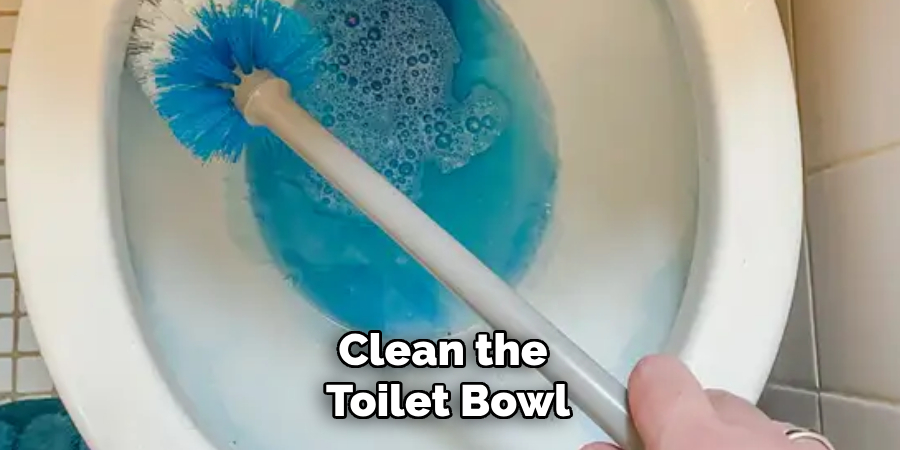
8. Baking Soda:
Baking soda is another natural cleaning agent that can help prevent mold growth in your toilet. You can sprinkle baking soda in the toilet bowl, let it sit for a few minutes, and then scrub it with a brush before flushing. This will not only remove any existing mold but also prevent it from coming back. Baking soda can also be used to clean and deodorize the toilet tank.
9. Use Bleach:
Bleach is a powerful disinfectant that can kill mold spores and prevent them from growing on surfaces. You can use bleach to clean your toilet bowl, tank, and seat by mixing one part bleach with ten parts water.
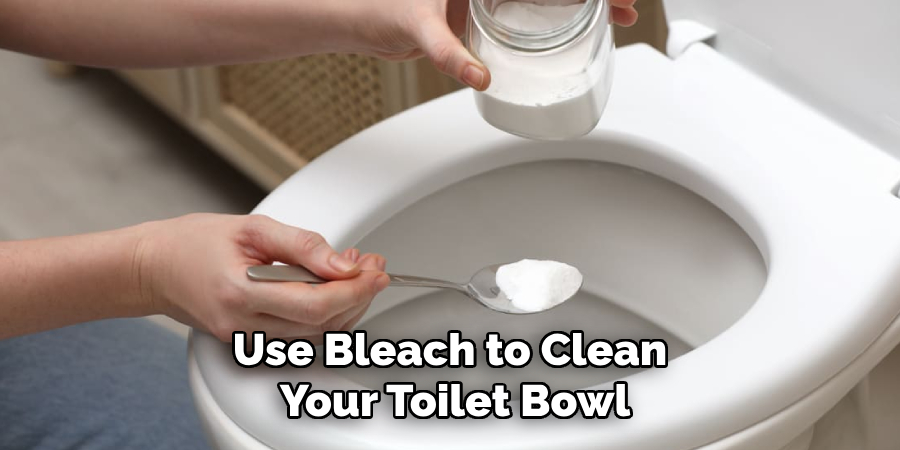
Alternatively, you can also use bleach-based cleaning products specifically designed to prevent mold growth in toilets. For safety purposes, make sure to wear gloves and avoid mixing bleach with other cleaning agents.
10. Essential Oils:
Certain essential oils, such as tea tree oil and eucalyptus oil, have antifungal properties that can help prevent mold growth in your toilet. You can add a few drops of these oils to your cleaning solution or directly onto the toilet brush before scrubbing.
This will not only leave your toilet smelling fresh but also discourage mold growth. This method is also safe and chemical-free, making it a great option for those with allergies or sensitivities.
11. Regular Inspections:
Lastly, make sure to regularly inspect your toilet for any signs of mold growth. This includes checking under the rim of the bowl, around the seat hinges, and inside the tank. If you notice any spots or discoloration that may indicate mold growth, make sure to clean it immediately and address any underlying issues that may be causing excess moisture in the bathroom. Staying vigilant can help prevent mold from spreading and causing potential health issues.
Following these tips can help prevent mold growth in your toilet and keep it clean and hygienic. Remember to regularly clean, dry, and maintain proper air circulation in your bathroom to discourage mold from thriving.
By taking preventive measures, you can ensure a healthy and mold-free environment for yourself and your family. So, make sure to incorporate these practices into your cleaning routine to keep your toilet sparkling clean and mold-free. Happy cleaning!
Additional Tips and Tricks to Stop Mold in Toilet
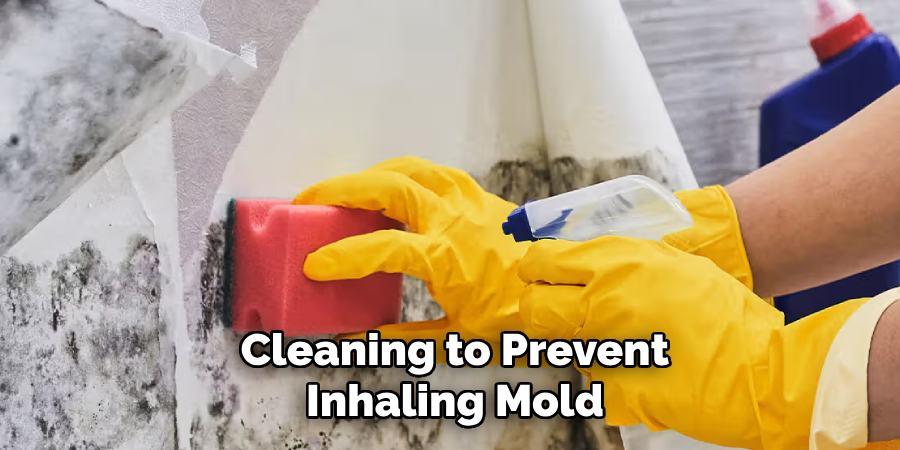
- If you notice any mold growth in your toilet, it’s important to address it immediately. Mold can spread quickly and cause health issues if left untreated. This includes wearing protective gear, such as a mask and gloves while cleaning to prevent inhaling mold spores or coming into direct contact with them.
- Cleaning your toilet regularly can help prevent mold growth. Use a disinfectant cleaner specifically designed for bathrooms, and pay special attention to areas where water tends to accumulate, such as under the rim and around the base of the toilet.
- Use a toilet brush to scrub away any visible mold growth, and then rinse thoroughly with water. For tougher stains or buildup, you can use a mixture of baking soda and vinegar to help loosen and remove the mold.
- Ensure your bathroom is properly ventilated by running the exhaust fan during and after showering or bathing. This will help reduce the amount of moisture in the air and prevent mold growth.
- If your toilet is constantly leaking, it’s important to fix the issue as soon as possible. A leaky toilet can lead to excess moisture, which can contribute to mold growth. You may need to call a plumber for assistance with fixing the leak.
- Keep an eye on any cracks or damage in the porcelain of your toilet, as these can also provide a breeding ground for mold. Repair or replace any damaged areas to prevent mold from growing.
- Consider using a mold-resistant toilet bowl cleaner to help prevent future mold growth. These cleaners contain ingredients that can help inhibit the growth of mold and mildew in your toilet.
- In addition to cleaning your toilet regularly, it’s important to also maintain the cleanliness of your bathroom as a whole. Wipe down surfaces, keep towels and bathmats clean, and empty trash regularly to prevent mold from spreading.
- If you have a shower curtain, be sure to wash it regularly or replace it if it becomes moldy. You can also spray the curtain with a mixture of vinegar and water and then wipe it down to help prevent mold growth.
- Lastly, keeping a dehumidifier in your bathroom can also help reduce moisture levels and prevent mold growth. Make sure to empty and clean the dehumidifier regularly to avoid creating another breeding ground for mold.
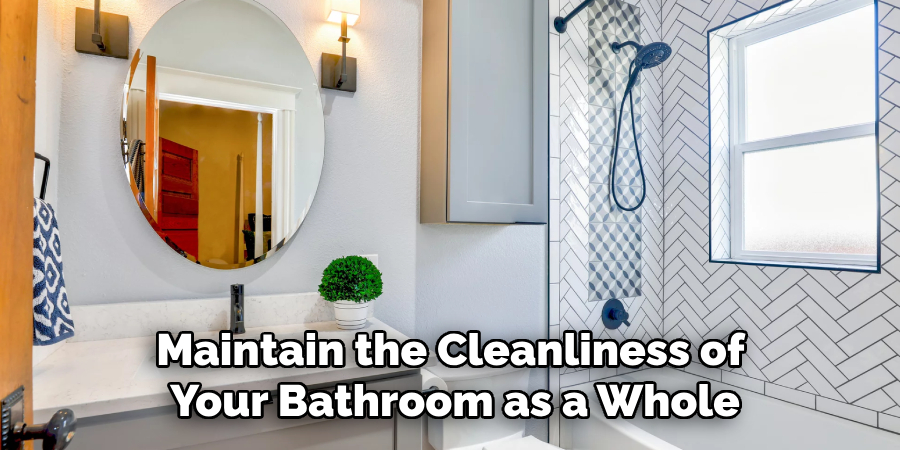
Following these tips and tricks can help keep your toilet and bathroom mold-free. Remember, it’s important to address any mold growth as soon as you notice it to prevent further spreading and potential health issues. Stay on top of regular cleaning and maintenance to ensure a healthy and hygienic bathroom environment for you and your family.
So, be proactive in preventing mold growth in your toilet and enjoy a clean and healthy bathroom. So, don’t let mold take over your toilet – follow these tips and tricks to keep it at bay! Keep your toilet sparkling clean and free of any unwanted mold growth. Happy cleaning!
Maintenance Tips for Long-Term Mold Prevention
1. Regular Cleaning:
One of the best ways to prevent mold growth is to keep your home clean. This includes regular vacuuming, dusting, and wiping down surfaces. Be sure to pay special attention to areas that tend to collect moisture, such as bathrooms and kitchens. By regularly cleaning these areas, you can remove any potential food sources for mold and reduce its growth.
2. Proper Ventilation:
Proper ventilation is key in preventing mold growth. Ensure to use exhaust fans in bathrooms and kitchens and open windows when possible to promote airflow. This will help reduce the humidity levels in your home and prevent moisture from being trapped, which can lead to mold growth. This is especially important in areas prone to high humidity levels.
3. Address Leaks and Water Damage:
Addressing any leaks or water damage in your home is crucial for long-term mold prevention. If you notice a leak, it’s important to address it immediately to prevent further damage and potential mold growth. Additionally, be sure to inspect your home regularly for any signs of water damage, such as discoloration on walls or ceilings, and address them promptly.
4. Monitor Indoor Humidity Levels:
Mold thrives in environments with high humidity, so it’s important to monitor the humidity levels in your home. Ideally, indoor humidity should be between 30% and 50%. You can use a dehumidifier to help control moisture levels and prevent mold growth. If you live in a particularly humid area, it may be necessary to use a dehumidifier year-round.
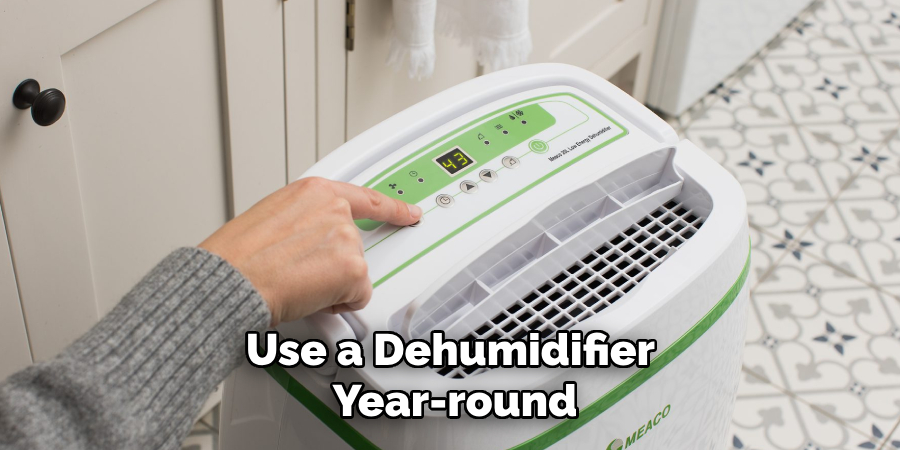
5. Use Mold-Resistant Products:
When renovating or building your home, consider using mold-resistant products such as drywall and paint. These products are specifically designed to resist mold growth and can help prevent future issues. It’s also important to properly seal any cracks or gaps in your walls, windows, and doors to prevent moisture from seeping in.
6. Regular Inspections:
It’s important to regularly inspect your home for any signs of mold growth. This includes checking under sinks, behind appliances, and in areas that are prone to dampness. If you notice any mold growth, it’s important to address it immediately to prevent it from spreading and causing further damage. Regular inspections can help catch mold growth early on and prevent major issues in the future.
7. Monitor Indoor Plants:
Indoor plants can also contribute to mold growth if not properly maintained. Make sure to regularly check for any signs of mold on the soil or leaves and promptly remove any affected plants. It’s also important to avoid overwatering plants, as this can create a damp environment conducive to mold growth. This is especially important for those with allergies or respiratory issues, as mold can worsen their symptoms.
8. Clean and Dry Wet Items:
Any wet or damp items in your home should be promptly cleaned and dried to prevent mold growth. This includes clothes, towels, and even furniture that may have gotten wet from a spill or leak. It’s important to ensure these items are completely dry before putting them away to prevent mold growth. Additionally, make sure to regularly clean and disinfect any humidifiers or air conditioning units, as these can also contribute to moisture buildup and mold growth.
9. Use Mold-Killing Products:
If you do notice mold growth in your home, it’s important to address it immediately using proper cleaning products. Do not attempt to remove mold with regular household cleaners, as this can actually spread the spores and make the problem worse.
Instead, use products specifically designed for killing mold and follow the instructions carefully. Hiring a professional mold remediation service may also be necessary to address the issue fully.
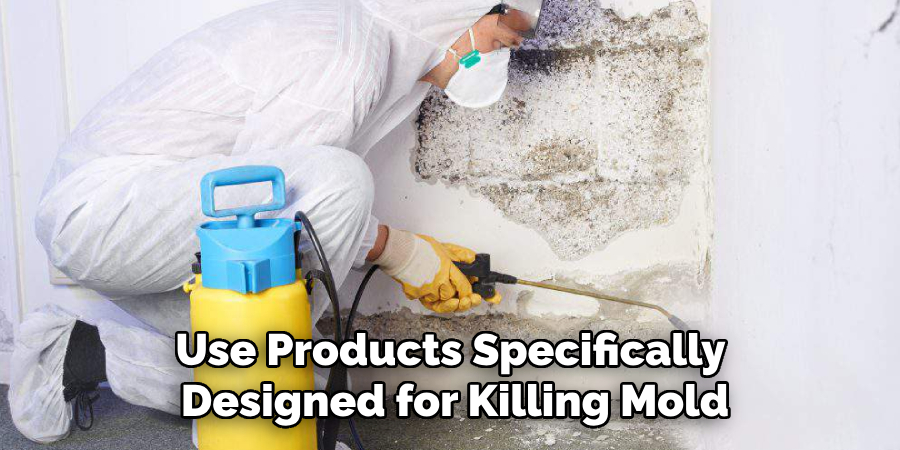
Following these maintenance tips can help prevent mold growth in your home and keep you and your family safe and healthy. Remember to regularly clean, properly ventilate, address any leaks or water damage, monitor humidity levels, use mold-resistant products, conduct regular inspections, monitor indoor plants, promptly clean and dry wet items, and use proper cleaning products if necessary.
By taking these preventative measures, you can enjoy a mold-free home for years to come. So, always be vigilant and take the necessary steps to keep your home free from mold. Mold prevention is an ongoing process, so make sure to incorporate these tips into your regular cleaning routine to maintain a healthy living environment. Happy cleaning!
Frequently Asked Questions
What Causes Mold in the Toilet?
Mold is a type of fungus that thrives in warm, damp environments. Therefore, the most common cause of mold growth in toilets is excess moisture and humidity levels. This can be due to poor ventilation, high humidity levels in the bathroom, or leaks from the toilet tank or pipes. Additionally, if you have a habit of leaving wet towels or clothes in the bathroom, this can also contribute to mold growth.
How Can I Prevent Mold in My Toilet?
Preventing mold in your toilet starts with proper cleaning and maintenance. Regularly scrubbing and disinfecting your toilet bowl and tank can help remove any existing mold and prevent new growth. It’s also important to ensure your bathroom has good ventilation, whether through a window or exhaust fan.
If the humidity levels in your bathroom are consistently high, consider using a dehumidifier. Lastly, be mindful of any leaks from your toilet and have them fixed immediately to prevent excess moisture.
Can I Use Bleach to Remove Mold in My Toilet?
Bleach is a common household product that many people use for cleaning and disinfecting. While it can be effective in removing mold from hard surfaces, it’s not recommended for use in toilets. Bleach can actually damage the flushing mechanisms of your toilet and cause more harm than good. Instead, opt for using a store-bought mold and mildew cleaner or a natural solution such as vinegar or baking soda.
Conclusion
Knowing how to stop mold in toilet is important not only for the cleanliness and appearance of your bathroom but also for your health. You can effectively prevent mold growth in your toilet by taking proper cleaning and maintenance measures and addressing any potential sources of excess moisture.
Remember to avoid using bleach and opt for safer cleaning alternatives. If you have a persistent mold problem, it’s best to consult a professional for further assistance. So, keep your bathroom clean and dry to stop mold in its tracks! Stay healthy, happy, and mold-free. Happy cleaning!

